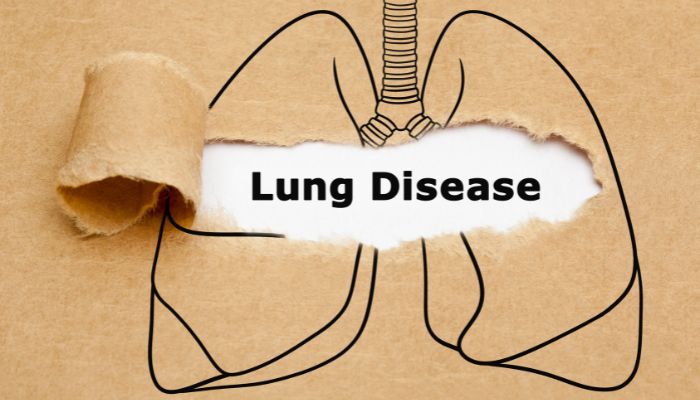|
Formula could ID patients in need of 'enhanced managing strategies,' study says by Lindsey Shapiro, PhD | April 30, 2024 Researchers have developed a model for predicting which systemic sclerosis (SSc) patients with interstitial lung disease (ILD) — together known as SSc-ILD — will experience progressive lung function declines that are known to be associated with a poorer prognosis. The prediction algorithm accounts for nine clinical factors, including age, certain SSc features and symptoms, therapy use, and disease-associated antibodies. All were found to be linked to the development of this aggressive form of ILD — called progressive fibrosing interstitial lung disease or PF-ILD — in a group of about 300 patients. “This study developed the first prediction model for PF-ILD in patients with SSc-ILD,” the researchers wrote, noting that “the established formula … could help in identifying patients with the highest risk, who should receive enhanced managing strategies during follow-up.” Titled “Prediction of progressive fibrosing interstitial lung disease in patients with systemic sclerosis: insight from the CRDC cohort study,” the work was published in RMD Open. Half of patients in study found to have aggressive disease type PF-ILD In SSc, also called systemic scleroderma, an overactive immune system drives inflammation and scar tissue buildup — known as fibrosis — in the skin and internal organs. When the lungs are affected, patients may experience ILD, then named SSc-ILD, where the lung tissue is scarred and damaged, and breathing becomes more difficult. The severity and progression of interstitial lung disease can vary. PF-ILD, a progressive form, is marked by “rapidly aggravating [shortness of breath], progressive deteriorating lung function, declining physical functional capacity, worsening health-related quality of life, adverse therapeutic response and often early mortality,” the researchers wrote. An earlier identification of which patients are likely to experience this type of progression may enable a sooner start to interventions that could slow it down or stop it, preventing irreversible lung damage, according to the team. While some studies have reported a number of potential predictive factors of PF-ILD, an accurate model for identifying SSc patients who might be at a high risk of the aggressive lung disease has yet to be developed. Now, a team of scientists in China sought to develop one such model by looking at clinical information from 304 SSc-ILD patients who were registered in a Chinese database. These patients, 92.1% of whom were women, had an average age of 46.7 at the time they were registered. All participants were then followed for a mean of five years, which included evaluations of lung function.
In general, lung function trajectories, assessed using the forced vital capacity (FVC) test — measuring the maximum amount of air a person can forcibly exhale from the lungs after fully inhaling — were variable over follow-up. For example, even in patients who experienced overall declines, it was not uncommon for them to have years in which their lung function remained stable or improved. Likewise, even patients who had overall stable or improved lung function had periods of worsening in between. Still, most individuals experienced a slow lung function decline, “with up to 52%-80% of the patients [being] stable in each year over the 5-year period,” the team wrote. Ultimately, a total of 154 patients — half of them — were classified as having PF-ILD, defined as at least a 5% annualized decline in FVC. “Data adopted in this study was sufficient to prove that a considerable number of patients with SSc will develop PF-ILD during the disease course,” the researchers wrote. “Accordingly, high-risk patients should be identified early and receive more close monitoring.” Researchers ID’d risk factors that include age, sex, and smoking history A number of demographic and clinical factors were significantly more prevalent among those who ultimately had PF-ILD than among those who did not. These factors included being older than 50 and being male. Having elevated fats in the blood, a smoking history, a diffuse SSc subtype, arthritis, and shortness of breath all also were factors. Further, PF-ILD patients were also significantly more likely to be positive for anti-Scl-70 antibodies — a type of self-reactive antibody most commonly found in diffuse SSc patients — and to have lower blood levels of another type of antibodies called immunoglobulin A. The PF-ILD group also was treated significantly less often with cyclophosphamide and/or mycophenolate mofetil, two immunosuppressants, than were SSc patients without PF-ILD. All of these factors, except for male sex, were then used to develop a model for predicting an SSc-ILD patient’s cumulative risk of PF-ILD in the next five years. By applying the predictive algorithm to data from these 304 patients at the time of registration in the database, the team found that 152 were considered to have a low risk, 76 a medium risk, and 76 a high risk. Overall, validation of the model in this patient group “showed favorable accuracy and stability of the model,” the researchers wrote. Still, the scientists emphasized that additional validation of their risk-stratification approach will be needed to ensure it can be generalized to other groups of patients. “Consensus and more specific algorithm are required to guide how it could be applied in clinical practice,” the team concluded. Comments are closed.
|
AuthorScleroderma Queensland Support Group Archives
July 2024
Categories
All
|
Scleroderma Association of Queensland
©Scleroderma Association of Queensland. All rights reserved. Website by Grey and Grey.

